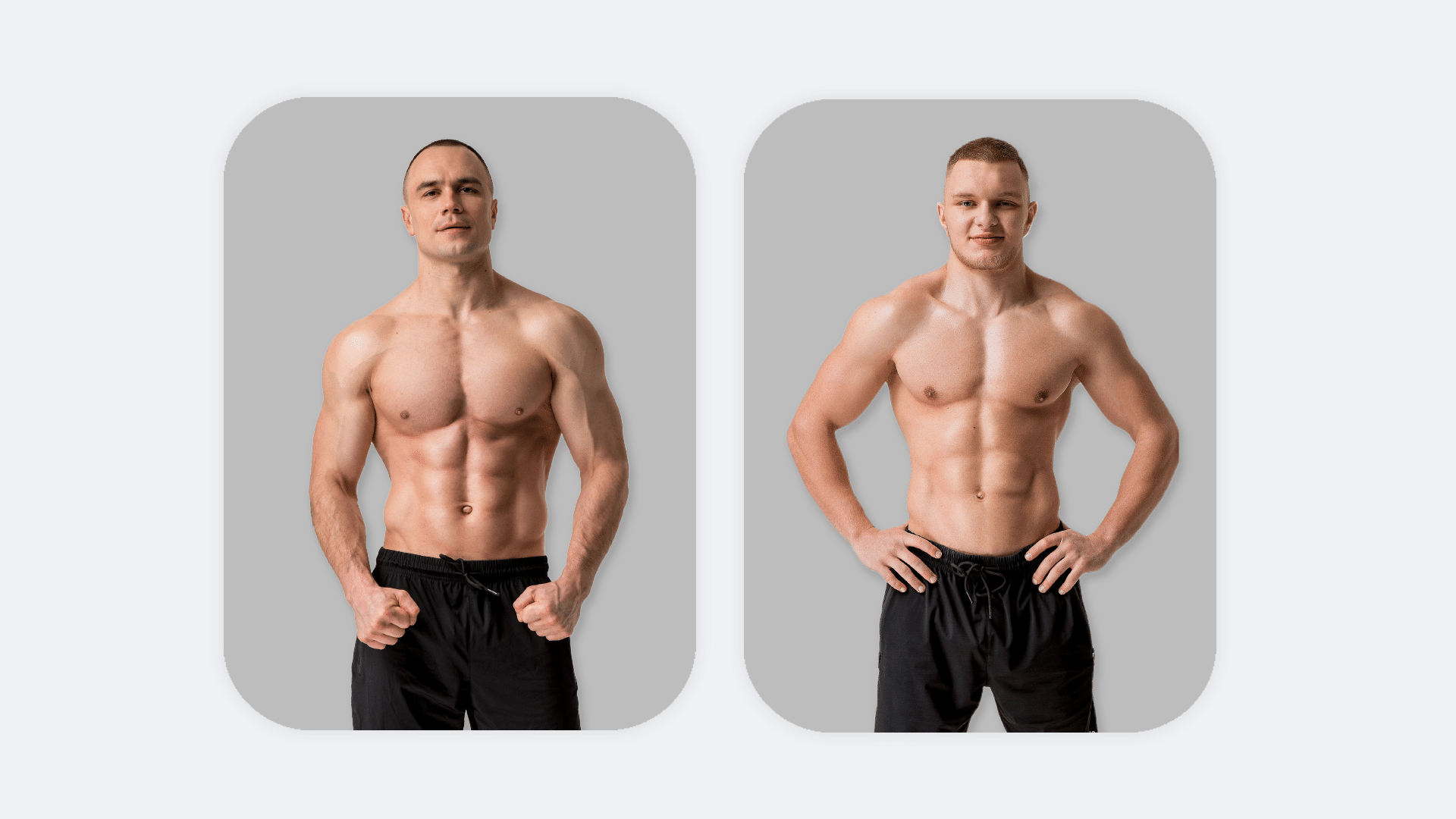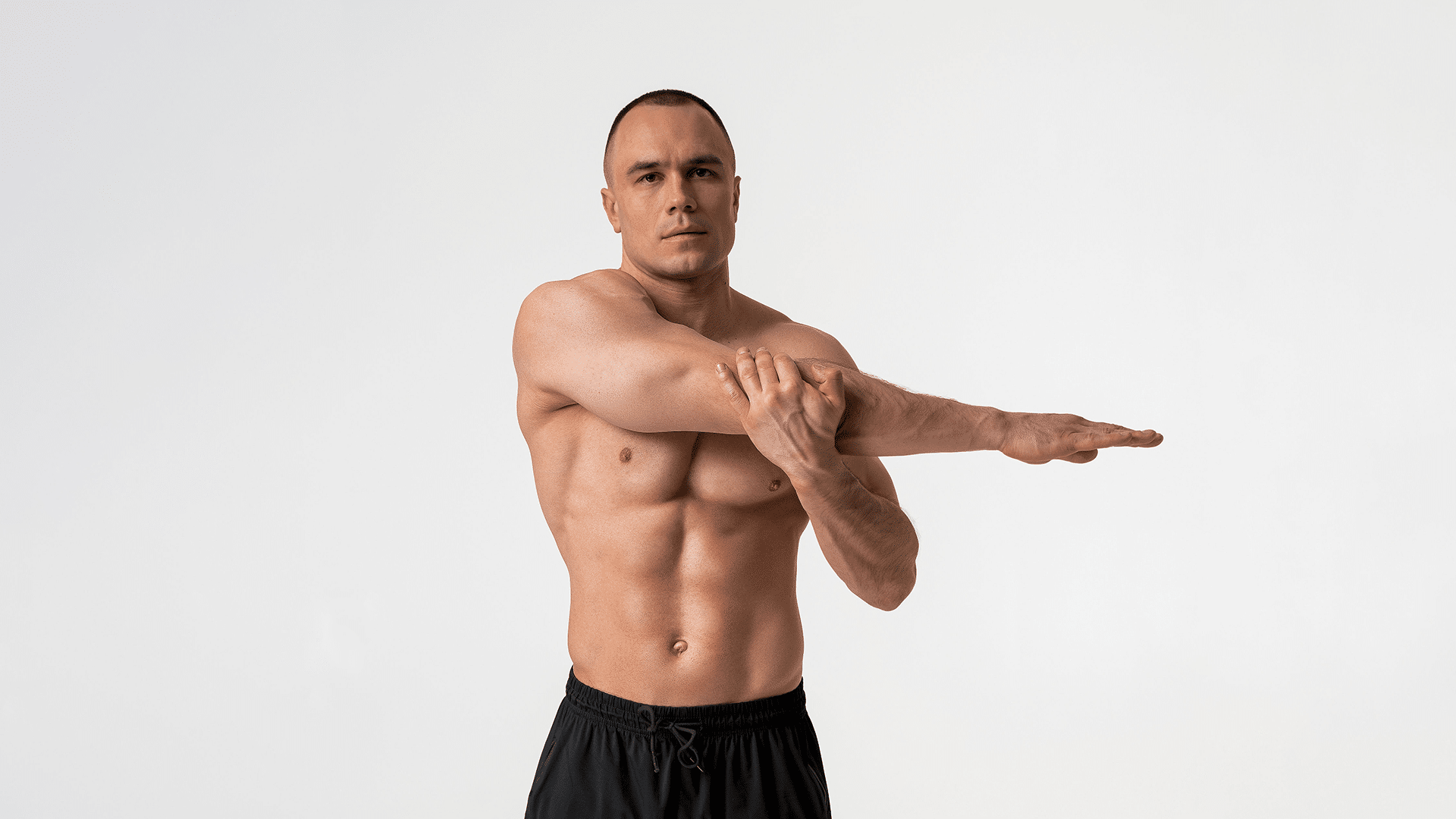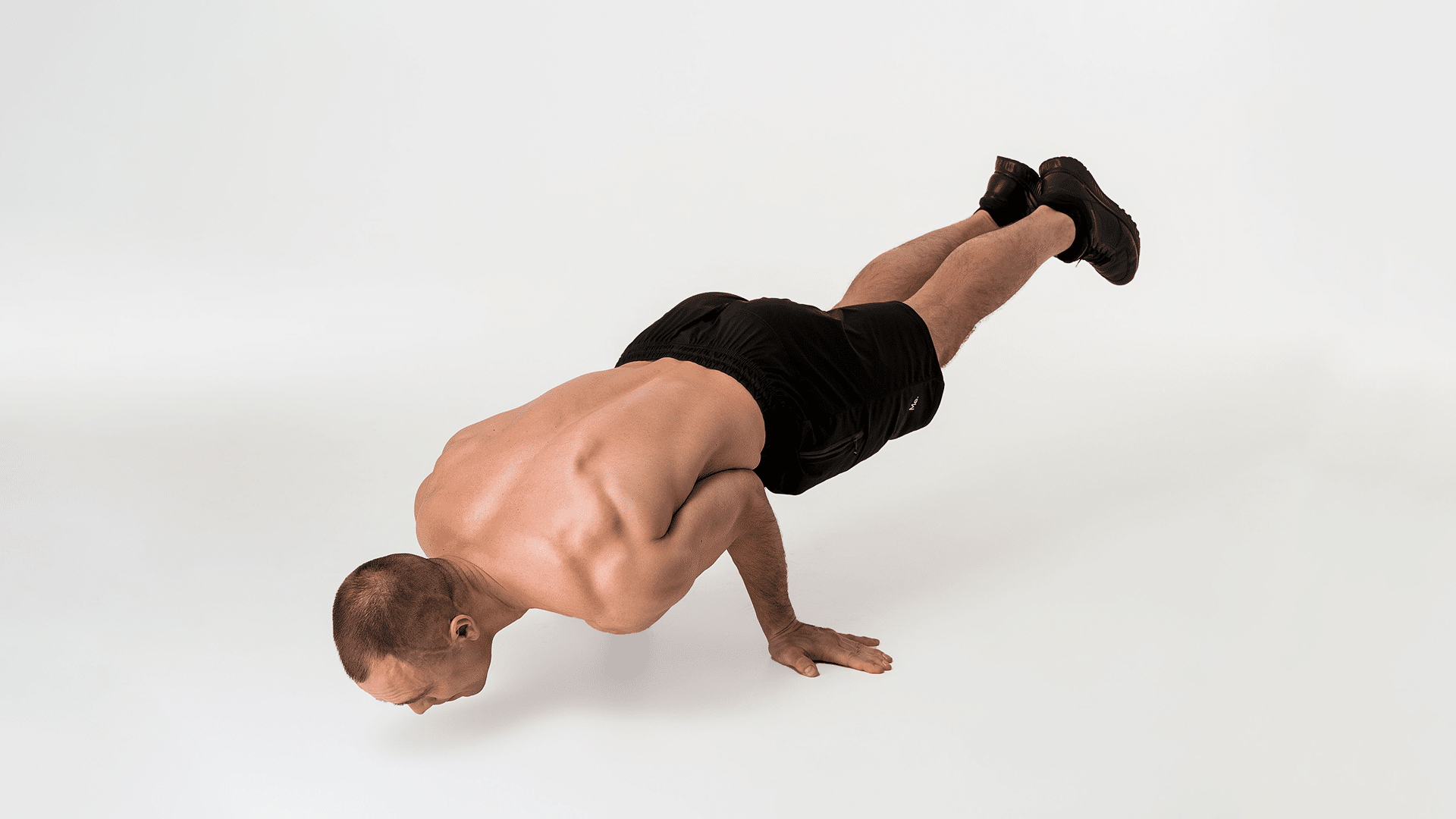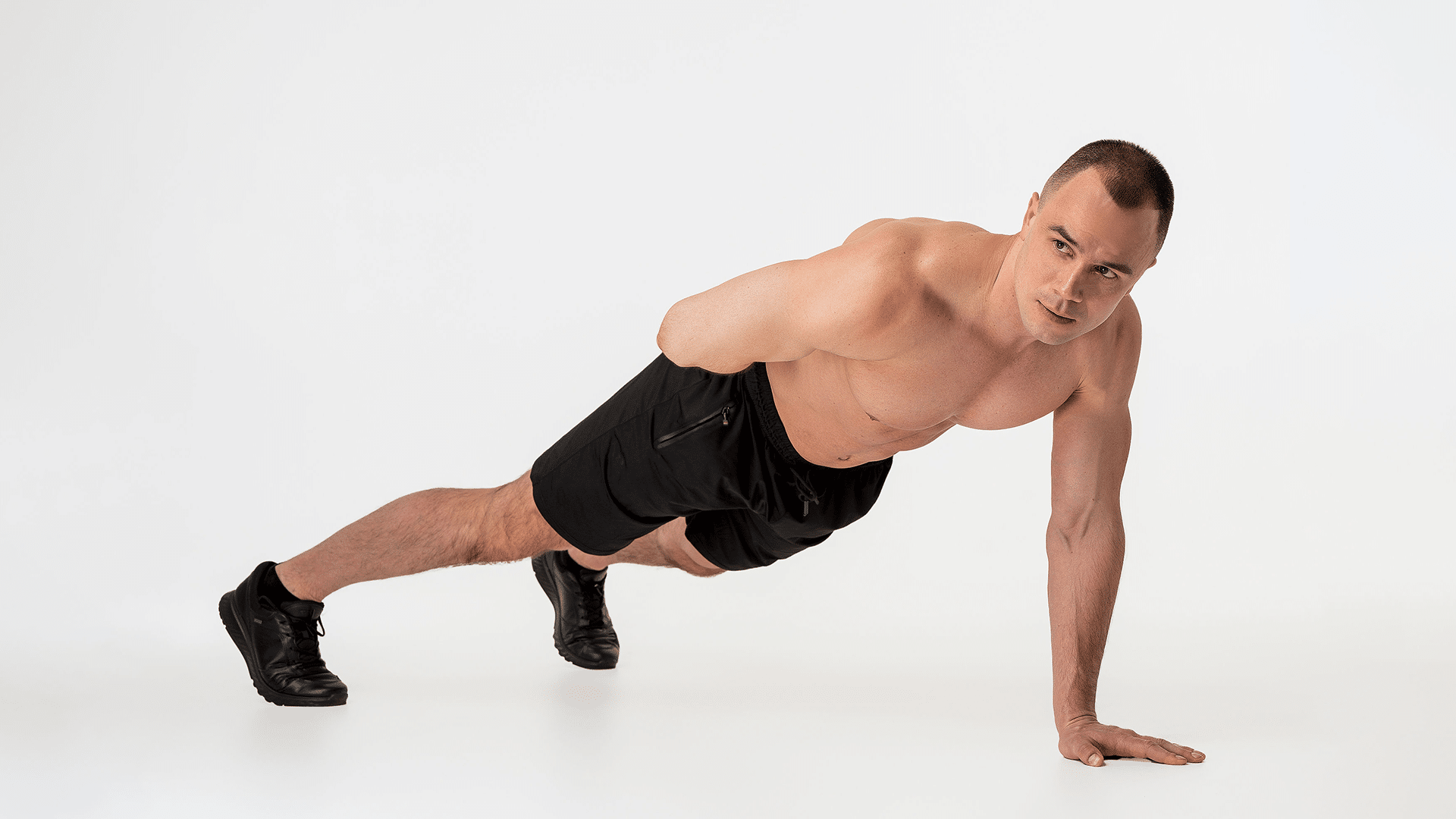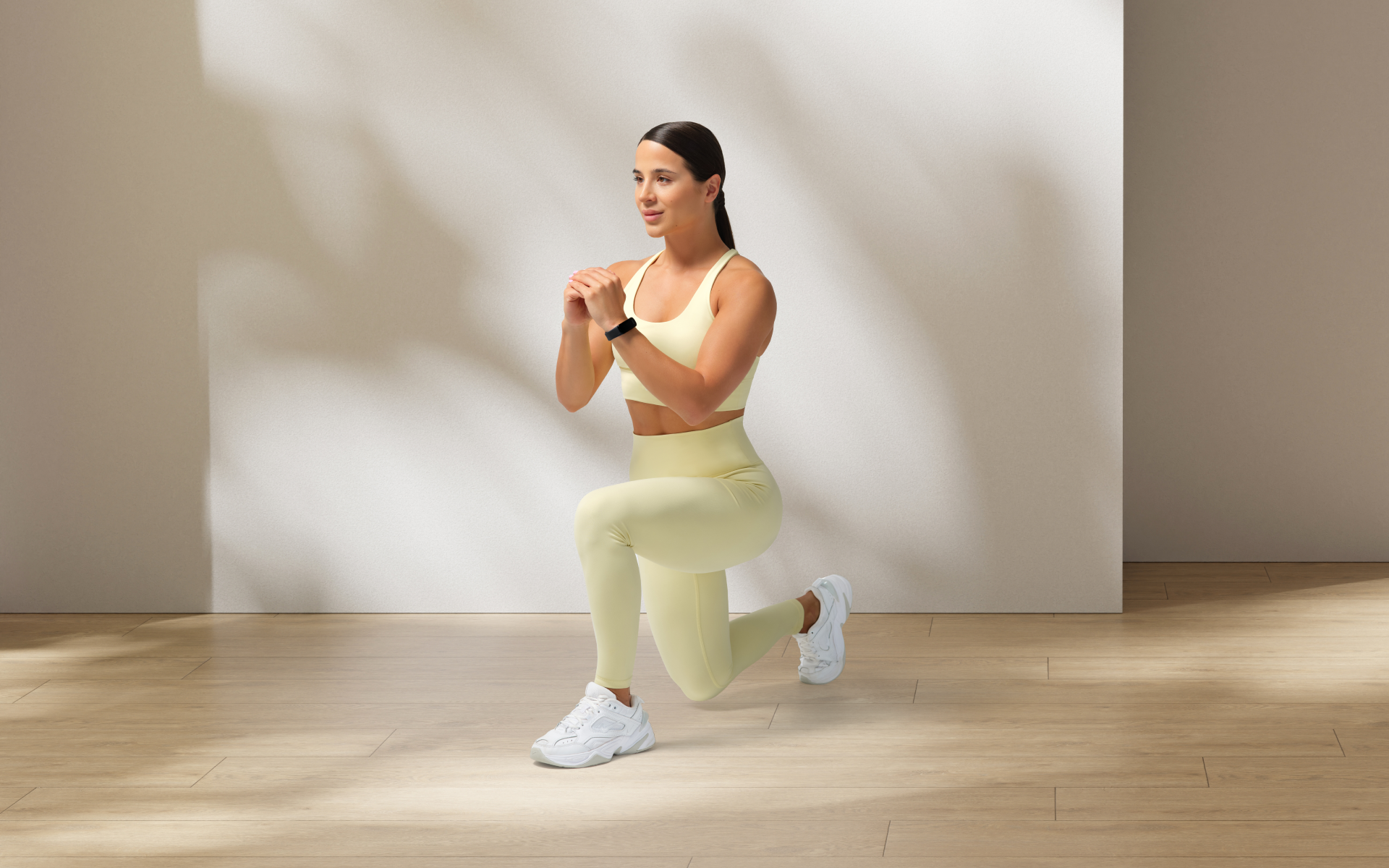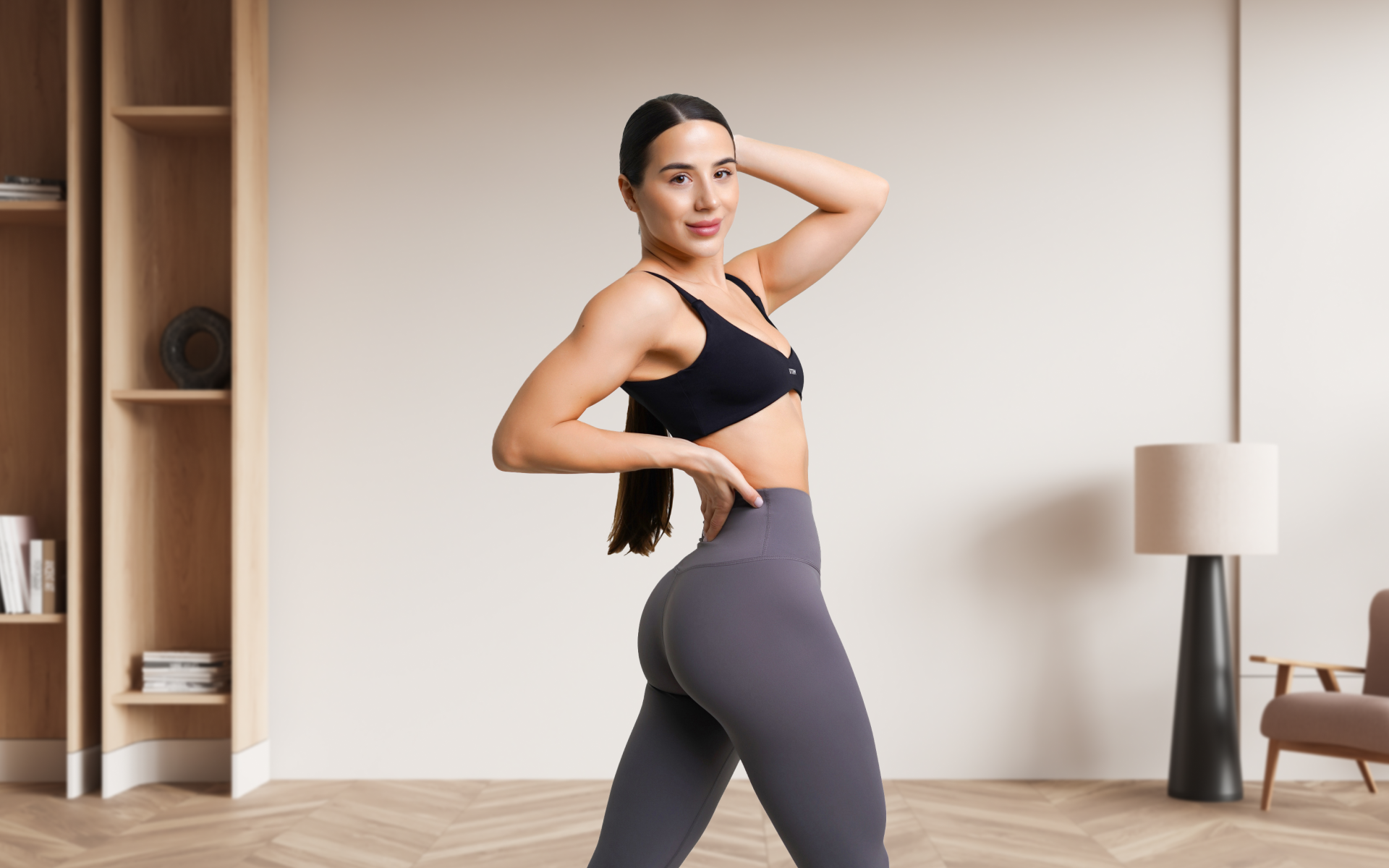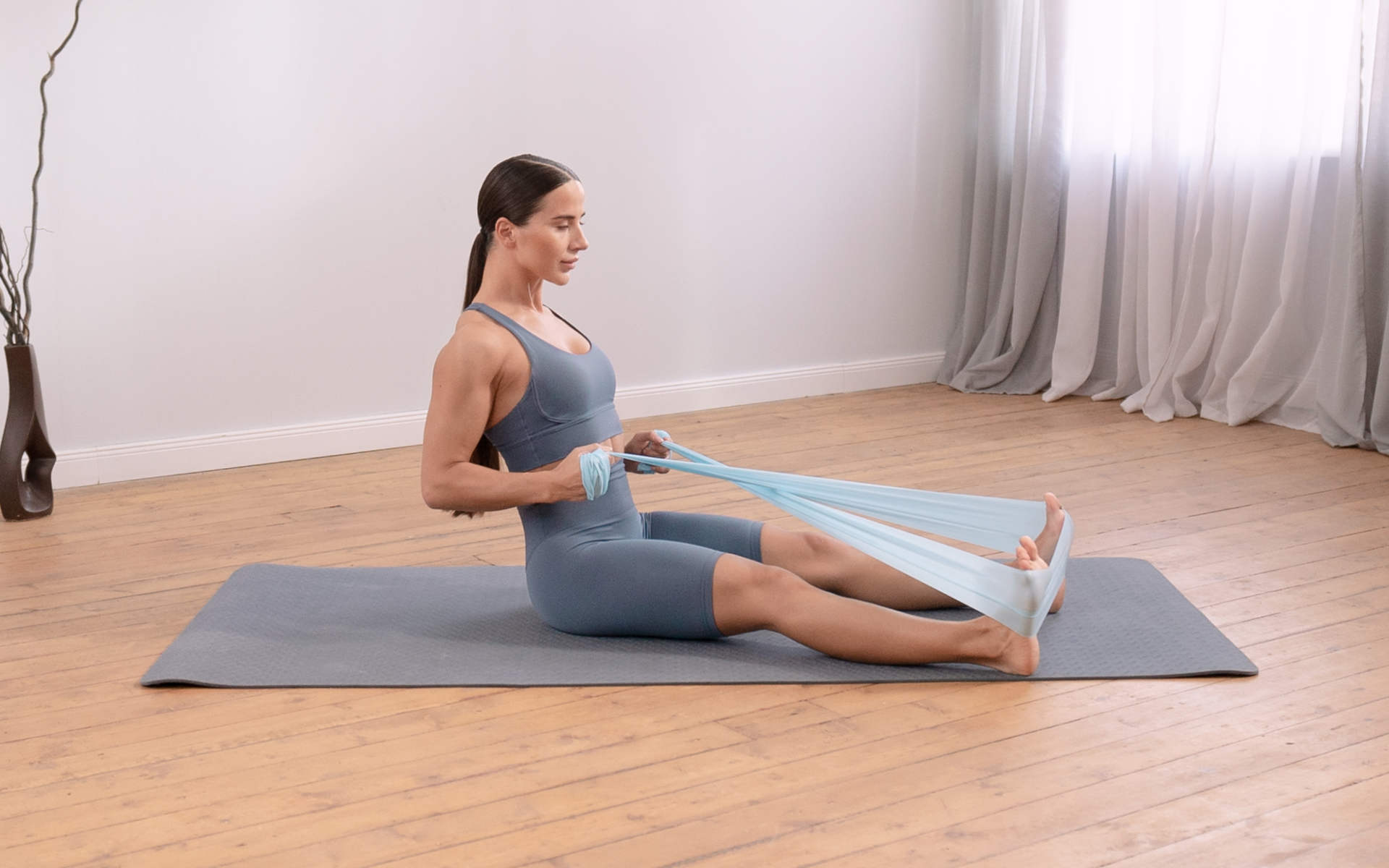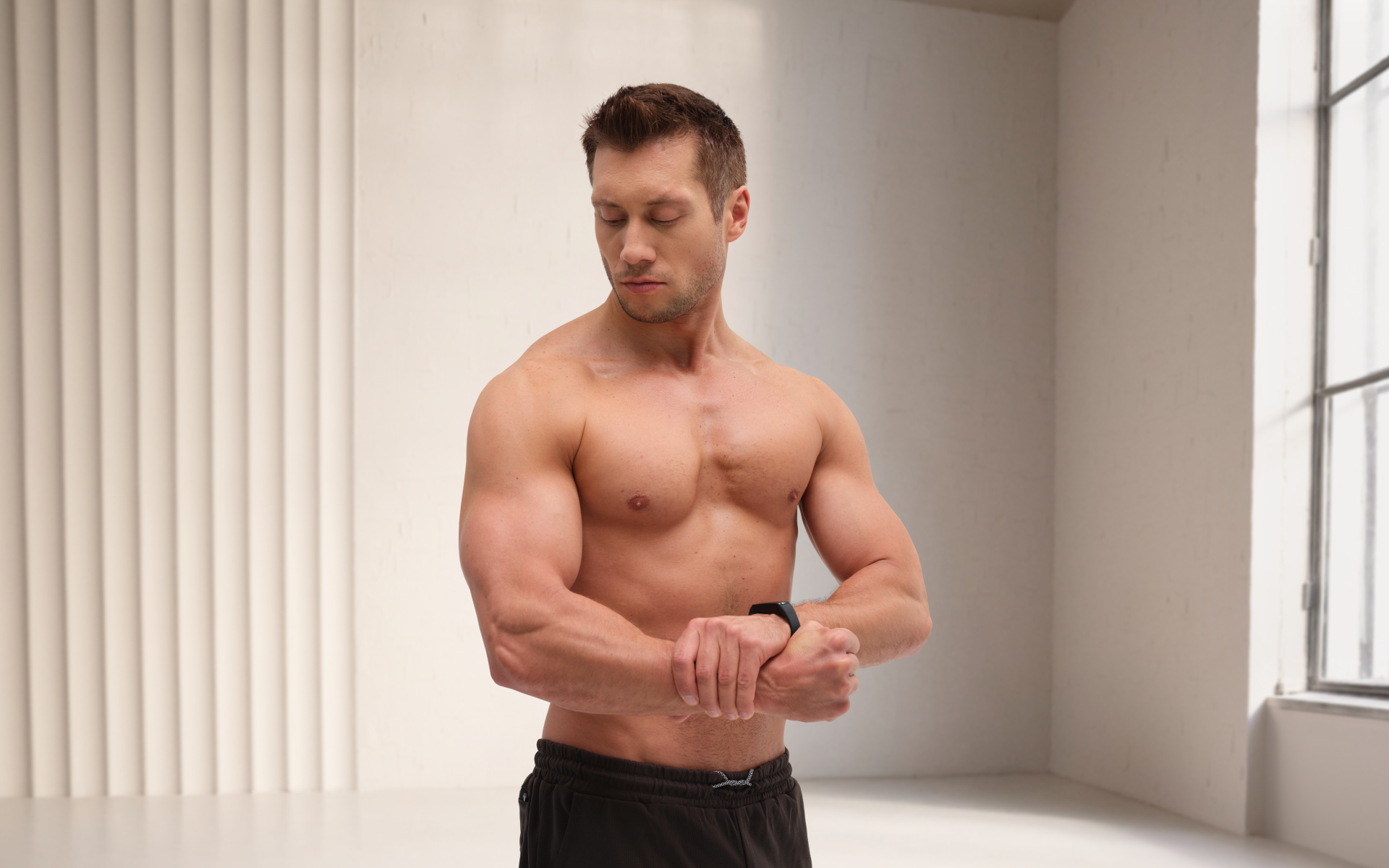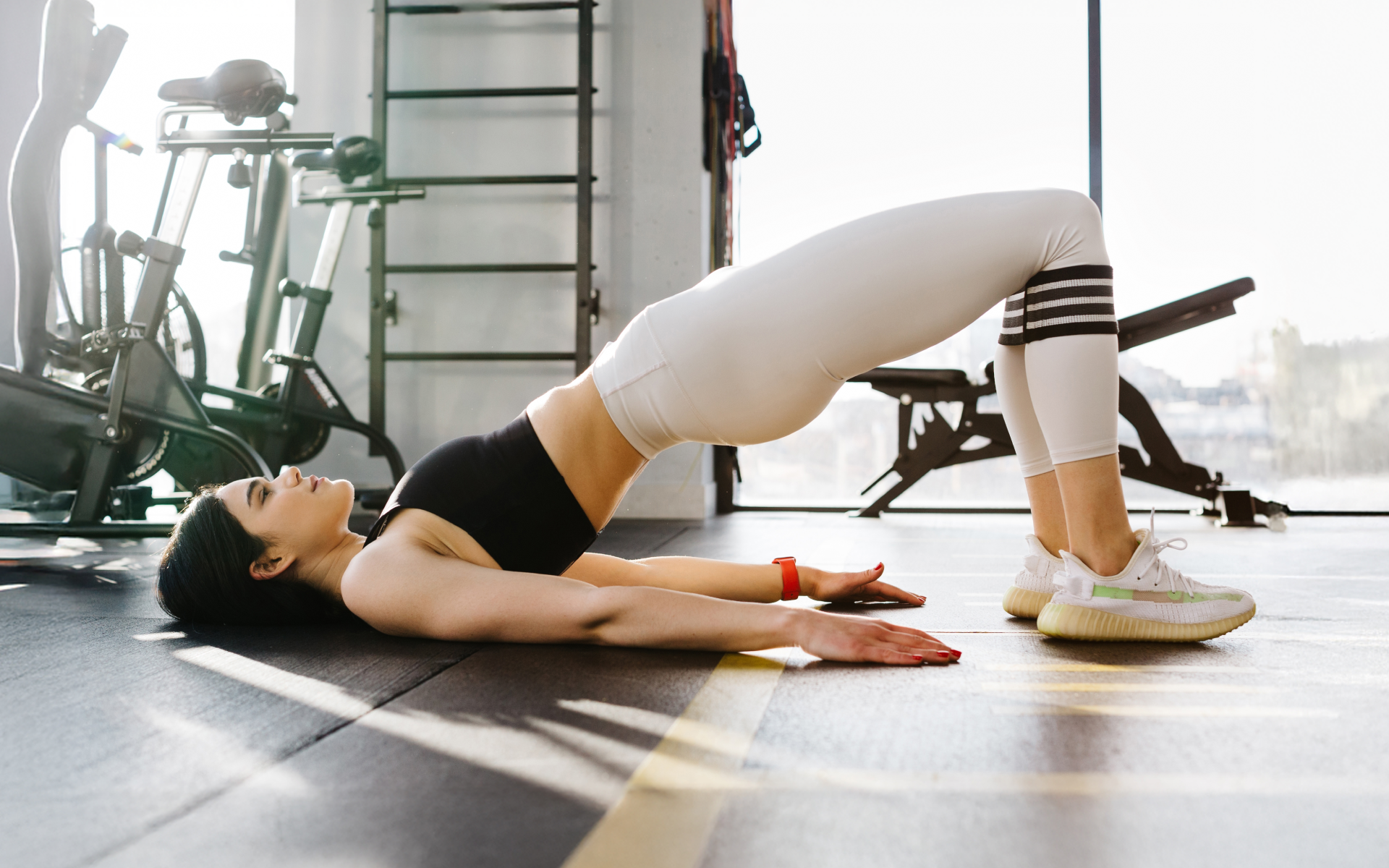An intro into calisthenics helps beginners wanting to enter the world of bodyweight exercises. Fantasizing about human flags and the advanced parkour-style moves you see is fun but can be a bit unrealistic for someone just starting out. Nonetheless, you wish to start somewhere and have come to the right place.
Let’s do a complete intro to make sure you have every tool, tip, and a 30-day workout plan to get you started. You’ll be raving about your bodyweight exercises at home in no time. Let’s begin with the basics before showing you the calisthenics that can change your life.
How Do You Introduce Calisthenics?
A complete intro to calisthenics is the beginning of your fitness journey. Here’s a sneak peak at what you’ll discover in this comprehensive calisthenics guide for beginners:
- What to know about beginner calisthenics (7)
- How calisthenics builds muscle (11, 19, 22)
- How it improves core function and strength (22, 23)
- How women benefit from calisthenics (9)
- The secrets to maximizing shoulder functions and mobility (1, 2)
- The neuromuscular coordination, functional strength, and range of motion link (1, 2)
- The advantage of whole-body calisthenics (4)
- How to create the ideal calisthenics circuits (8, 12, 1)
- The importance of muscle recovery (5)
- How to help your muscles recover (10, 3)
- The 13 best beginner’s calisthenics exercises (1, 6, 7)
- The top 5 modified calisthenics for beginners (13, 14, 20, 15, 17)
- A 30-day calisthenics for beginners workout plan
Reasons why BetterMe is a safe bet: a wide range of calorie-blasting workouts, finger-licking recipes, 24/7 support, challenges that’ll keep you on your best game, and that just scratches the surface! Start using our app and watch the magic happen.
How Do Beginners Start Calisthenics?
An intro to calisthenics for beginners will set you up for success while leaving you with realistic expectations. The main idea is that you work toward your body goals at a pace that works for someone who hasn’t exercised for a while, if not ever.
What is Calisthenics for Beginners?
A calisthenics workout is a workout focused on bodyweight exercise that uses gravity to create resistance to help you build strength and endurance in multiple muscles. You may already know a few calisthenics exercises, which improve coordination, balance, and flexibility (7).
What Age Should I Start Calisthenics?
Calisthenics is good for all ages and may help individuals maintain control over their bodies and mobility as they age. Californian research found that people start losing 3-8% of their muscle mass per decade after 30, declining faster after 60 (16).
Declining muscles are responsible for mobility, flexibility, and strength changes as you age. Don’t wait until you’re 60 to start improving what matters (7).
Calisthenics for Beginners Benefits
As a beginner, you’ll see some changes in your body composition, strength, and more over the 30-day challenge. Let’s see what calisthenics can do for you.
Will Calisthenics Help You Build Muscles?
A North Dakota study revealed that a 4-week weightlifting versus a progressive calisthenics program was better at improving muscle strength and thickness (11). However, it’s a short-term study with similar group fitness levels. You’ll see differences in longer programs for good reasons.
Traditional weightlifting and strength training rely on progressive muscle overload to increase muscle strength and size. Progressive muscle overload requires you to continue increasing your load through resistance, intensity, or reps to push the muscles beyond previous fatigue points (19).
You could use progressive resistance in calisthenics by adding equipment or increasing the reps, tempo, and sets until your muscles take longer to fatigue. Progressively increasing the load, resistance, and reps showed some muscle strength improvements over eight weeks (19).
Calisthenics Equipment to Progress Resistance
Beginners can also use equipment as they feel they need to progress their muscle fatigue. Some beginner-friendly equipment includes:
- A dip station (two equal-height bars to support your body weight)
- Gymnast rings
- Pull-up assist bands
- Pull-up bars (a door or wall-mounted)
- Resistance bands
Calisthenics Builds Lean Muscle & Body Composition
Bulking isn’t the goal if you consider how lean the gymnast-styled people look when doing the human flag. Instead, research in Isokinetics and Exercise Science shows that calisthenics builds lean muscle mass for sleek body composition (22).
Calisthenics May Improve Core Function & Strength
Posture and functional strength is vital to age with a smile. An Italian study confirmed that calisthenics could improve your posture and functional strength, working the core muscles in every movement (22). Meanwhile, Harvard says strengthening your core will keep you mobile as you age (23).
Can Women Enjoy Calisthenics?
A Brazilian study shows that men and women gained similar upper body strength after ten weeks of training (9). Both genders followed the same resistance programs. That said, you don’t need to worry about starting calisthenics at a disadvantage.
Read more: The Simplest Lower Back Calisthenics Guide for Beginners
What Should I Learn First in Calisthenics?
Let’s forget about the human flag you see people doing, wondering if they’re gymnasts. Instead, start with the basic calisthenics moves to improve neuromuscular coordination and functional strength (1). In many cases, you work multiple muscles together in calisthenics.
It takes time to get the technique, form, and functional strength to get those muscles performing at their peak. So, start with calisthenics that target a range of motion improvements, particularly in your shoulders (1). You need to work on scapula motion.
The National Library of Medicine says the scapula (shoulder blades) are capable of six motions (2). The bone controlling the shoulder’s range of motion can retract, protract, elevate, depress, and rotate upward or downward. Use exercises to improve these motions.
Simple movements can improve these motions. For example, scapular pull-ups work the retraction and depression motions. A push-up works on protraction and elevation. Also, dips exercise upward and downward rotations.
An Intro to Calisthenics at Home
Let’s look at the exercises you’ll find in the coming workout plan, a suitable number of reps/sets, and more before getting to the challenge.
Whole-Body vs. Split Calisthenics for Beginners
Whole-body calisthenics targets muscles everywhere, including pull, push, lower body, and core. Meanwhile, a split means you focus on different muscle groups on different days. Leg Day is a famous example of a split workout.
A Norwegian study suggests that whole-body resistance training trumps split workouts for muscle strength and energy output in untrained women (4). Whole-body calisthenics is best for beginners, but you can add circuits or cycles for fun.
Calisthenics Circuits for Beginners
Calisthenics beginner circuits refer to the reps, sets, and resting intervals beginners can do. Here are beginner-friendly calisthenics circuit training tips (8):
- Any circuit can have up to 10 exercises, but beginners could start with 6-8,
- A single circuit should include 10-15 reps per exercise set,
- Hold static exercises (planks) for 30 seconds and progress to 90 seconds as ready,
- Multi-set calisthenics circuit rest intervals for beginners start at 2-2.5 minutes (12),
- Gradually shorten rest intervals to progress your challenge, going down to 60-90-second intervals.
Do 2-4 in the first two weeks of the coming workout plan, increasing your circuits up to four for the remaining days. Remember not to push yourself beyond your current range of motion (1). It’s also advisable to discuss new workout plans with a healthcare provider.
Calisthenics Muscle Recovery for Beginners
Don’t overstretch or overuse muscles. The coming challenge carefully places rest days where necessary. Please follow them because muscle injuries can occur if you don’t. Research shows it can take muscles 48-96 hours to recover between workouts (5).
This is a good starting point for beginners to know, but other factors change the recovery times. Men aged 50-65 took the longest to recover, so beginners in this age group should take more rest days. The men aged 18-30 still showed good recovery at 48 hours (5).
Aim for 48-hour recoveries in your first week, but your muscles should start recovering more easily as your fitness improves. The first two weeks of the coming plan have 3-4 workout days but increase to 4-5 after that. It’s a whole-body plan, easing specific muscle overloads.
How to Improve Muscle Recovery
A review in Nutrients found that polyphenol-rich foods may help muscle recovery for up to 96 hours after a workout (10). Eat beetroot, black currant, blueberry, cocoa, pomegranate, and tart cherry to speed up your recovery or help you with sore or injured muscles.
Cold compresses and massages also work if you strain a muscle anywhere. A French review found that cold treatment or massages were the most effective in helping muscles recover and stop aching post-workout (3). Massage the area, or put ice packs on sore muscles.
BetterMe app will provide you with a host of fat-frying fitness routines that’ll scare the extra pounds away and turn your body into a masterpiece! Get your life moving in the right direction with BetterMe!
The Best Beginner’s Calisthenics Exercises
Before hopping onto your 30-day challenge, let’s see which beginner-friendly calisthenics will help you. You’ll also discover a few unusual ones you might not know.
The Basic Calisthenics Exercises for Beginners
At the top of your list is basic calisthenics without equipment to help you improve functional strength, coordination, and range of motion in various muscles at home, including (1, 6, 7):
- Burpees
- Chin-ups
- Crunches
- Dips
- Glute bridges
- Leg raises
- Lunges
- Planks
- Pull-ups
- Push-ups
- Rows
- Sit-ups
- Squats
Beginner Calisthenics Exercises for Specific Goals
Some beginner-friendly calisthenics exercises are modified versions of more advanced exercises. However, they’re easy enough to challenge you to improve your range of motion and strength to progress to harder exercises when you’re ready (1).
Hollow Body Hold
The hollow body hold is a beginner-friendly exercise that targets everything from your abs to your glutes and quads (13). The core muscles get a good workout while being help in a flexed and contracted position.
- Lie on your back, with your arms extended overhead resting on the ground and legs extended straight,
- Gently push your lower back into the ground as you engage the core muscles,
- Squeeze your thighs together to raise your legs slightly off the ground, lift arms slightly off the ground,
- Hold the position for as long as you are able, remember to continue to breathe.
Jump Squats
Jump squats are incredible calisthenics exercises for beginners because they target muscles and cardio simultaneously. Meanwhile, you’ll work on those glutes, quads, hamstrings, and core (14). Get some movement in your shoulders by raising your arms.
- Stand with your feet hip-width apart,
- Keep your arms bent, with your hands next to your shoulders,
- Lower your body until your hips become in-line with your knees,
- Push your body up while raising your arms as high as possible,
- Land on the balls of your feet with your arms back in the starting position.
Beginner’s Skin-the-Cat
Skin-the-cat is a more advanced calisthenics exercise, but a simple modification can help you practice it to strengthen the rotational shoulder movements (20). Use two gymnast-style rings or resistance bands carefully attached to an object, door, or fence.
- Stand with your back to the resistance bands,
- Grip each band with your shoulders in extension, hands behind your back,
- Start leaning forward until the resistance bands pull your scapula together,
- Hold the position for as long as possible.
Superman
A superman looks like a back-to-front plank. However, this exercise targets the lower and upper back, glutes, hamstrings and shoulders for a whole-body exercise (15). It’s an easy calisthenics workout for beginners to help you strengthen the core muscles.
- Lie face-down on a firm surface with straight arms and legs,
- Raise your arms and legs simultaneously until you feel back muscles tighten,
- Don’t raise them far enough to experience pain,
- Hold them as high as you can for 1-2 seconds and then release, continuing for 8-12 reps.
Supported Handstand
Handstands with support can help you practice the push-up version against a wall once you gain enough strength and flexibility. Meanwhile, these beastly exercises target your lats, pecs, shoulders, deltoids, triceps, core, and upper body (17).
- Splay your fingers as you put your palms against the floor before a wall,
- Bury your knees inside your elbows as you gently move into a headstand,
- Use the wall to support your body as you swing your legs against it,
- Slowly start pushing your head away from the ground,
- Only push as high as you can until you build upper body strength.
Read more: Calisthenics Shoulder Exercises: Techniques and Workouts
30-Day Calisthenics Workout Plan for Beginners
A beginner calisthenics workout plan helps to introduce your body to the exercises while building on those key starting factors, like range of motion, coordination, and strength (1). Complete 10-15 reps per dynamic exercise, or hold static exercises for 30 seconds.
Also, follow the 2-3 sets in the first two weeks, with 2-minute intervals, increasing them to 3-4 after, with 60-90-second intervals (8, 12). Finally, only use the modified version instructions of the more advanced calisthenics, like skin-the-cat.
| Day 1 Push-ups Pull-ups Plank Dips Skin-the-cat Glute bridges | Day 2 Rest | Day 3 Burpees Crunches Lunges Rows Superman Jump squats | Day 4 Rest | Day 5 Hollow hold Squats Dips Leg raises Plank Push-ups |
| Day 6 Rest | Day 7 Pull-ups Crunches Glute bridges Lunges Skin-the-cat Handstand | Day 8 Rest | Day 9 Push-ups Leg raises Rows Burpees Superman Dips | Day 10 Rest |
| Day 11 Pull-ups Crunches Glute bridges Hollow hold Lunges Jump squats | Day 12 Rest | Day 13 Push-ups Dips Lunges Squats Rows Handstand | Day 14 Rest | Day 15 Pull-ups Hollow hold Crunches Leg raises Glute bridges Skin-the-cat |
| Day 16 Push-ups Sit-ups Lunges Burpees Jump squats Superman | Day 17 Rest | Day 18 Chin-ups Glute bridges Hollow hold Squats Dips Rows | Day 19 Rest | Day 20 Sit-ups Pull-ups Superman Lunges Leg raises Plank |
| Day 21 Push-ups Burpees Crunches Rows Lunges Hollow hold | Day 22 Rest | Day 23 Chin-ups Dips Leg raises Squats Plank Skin-the-cat | Day 24 Push-ups Sit-ups Glute bridges Burpees Jump squats Superman | Day 25 Rest |
| Day 26 Pull-ups Lunges Rows Dips Skin-the-cat Superman | Day 27 Sit-ups Leg raises Burpees Squats Plank Hollow hold | Day 28 Rest | Day 29 Chin-ups Push-ups Crunches Glute bridges Superman Skin-the-cat | Day 30 Pull-ups Chin-ups Hollow hold Plank Superman Skin-the-cat |
To read more about calisthenics:
FAQs
Is Calisthenics Hard for Beginners?
Planches, back levers, and human flags are extremely difficult and possibly dangerous for beginners, but basic calisthenics is where everyone starts. The School of Calisthenics says it takes time to improve neuromuscular coordination, a large part of what helps you with advanced calisthenics (1). Then, beginners should build functional strength before progressing to harder exercises.
Should a 12-Year-Old Start Calisthenics?
Calisthenics can have surprising benefits for a 12-year-old. A University of the Philippines study shows how high-school students improved sustainable attention in tests after doing a 4-week calisthenics program (21). The kids also responded more accurately to the test.
Also, research in the Journal of Exercise Physiology found that kids who followed calisthenics exercises had better strength and endurance than kids only playing sports (18). Calisthenics is for all ages and may improve a young mind and physical functional strength.
Is Calisthenics Better Than the Gym?
Calisthenics is better for lean muscle mass, balance, coordination, and perfect control over your body’s movements. However, the gym may offer better chances of bulking your muscles. It depends on whether you want to spend money on a gym.
Pennsylvania State University states that weightlifting in a gym could build muscle mass faster, while calisthenics improves flexibility quicker (24). Consider whether you want a gym membership as a beginner, or if you’d like no-equipment exercises to start with at home.
The Bottom Line
A good intro to calisthenics lets beginners enter the bodyweight exercise world at home or anywhere they feel comfortable. Keep every tip in mind when practicing calisthenics to ensure you benefit from the workouts, and start your workout today to see the incredible changes in only 30 days.
DISCLAIMER:
This article is intended for general informational purposes only and does not serve to address individual circumstances. It is not a substitute for professional advice or help and should not be relied on for making any kind of decision-making. Any action taken as a direct or indirect result of the information in this article is entirely at your own risk and is your sole responsibility.
BetterMe, its content staff, and its medical advisors accept no responsibility for inaccuracies, errors, misstatements, inconsistencies, or omissions and specifically disclaim any liability, loss or risk, personal, professional or otherwise, which may be incurred as a consequence, directly or indirectly, of the use and/or application of any content.
You should always seek the advice of your physician or other qualified health provider with any questions you may have regarding a medical condition or your specific situation. Never disregard professional medical advice or delay seeking it because of BetterMe content. If you suspect or think you may have a medical emergency, call your doctor.
SOURCES:
- 5 Things We Wish We Knew When Starting Calisthenics (2021, schoolofcalisthenics.com)
- Anatomy: Back, Scapula | StatPearls | NCBI Bookshelf (2023, ncbi.nlm.nih.gov)
- An Evidence-Based Approach for Choosing Post-exercise Recovery Techniques to Reduce Markers of Muscle Damage, Soreness, Fatigue, and Inflammation: A Systematic Review With Meta-Analysis (2018, ncbi.nlm.nih.gov)
- A Randomized Trial on the Efficacy of Split-Body Versus Full-Body Resistance Training in Non-Resistance Trained Women (2022, bmcsportsscimedrehabil.biomedcentral.com)
- A Series of Studies: A Practical Protocol for Testing Muscular Endurance Recovery (2003, pubmed.ncbi.nlm.nih.gov)
- Calisthenics Exercises for Beginner to Advanced Level (2023 ,ispo.com)
- Calisthenics: What it Is, How to Do it, Exercises, and More (2020, medicalnewstoday.com)
- Circuit Training: Purpose, Benefits, and How to Get Started (2023, verywellhealth.com)
- Comparison of Upper Body Strength Gains Between Men and Women After 10 Weeks of Resistance Training (2016, ncbi.nlm.nih.gov)
- Effect of Polyphenol-Rich Foods, Juices, and Concentrates on Recovery from Exercise-Induced Muscle Damage: A Systematic Review and Meta-Analysis (2021, mdpi.com)
- Effect of Progressive Calisthenic Push-up Training on Muscle Strength and Thickness (2018, pubmed.ncbi.nlm.nih.gov)
- How Long to Rest Between Sets in Workouts for Muscle and Strength (2023, menshealth.com)
- How to Do a Hollow Body Hold: Techniques, Benefits, Variations (2023, verywellfit.com)
- How to Do Jump Squats (2022, webmd.com)
- How to Do the Superman Exercise: Benefits and Muscles Worked (2023, healthline.com)
- Muscle Tissue Changes With Aging (2010, ncbi.nlm.nih.gov)
- Nail Your First Handstand Push-Up to Pump Up Your Shoulders (2023, menshealth.com)
- (PDF) Does a Calisthenics-Based Exercise Program Applied in School Improve Morphofunctional Parameters in Youth? (2015, researchgate.net)
- Progressive Overload Without Progressing Load? The Effects of Load or Repetition Progression on Muscular Adaptations (2022, ncbi.nlm.nih.gov)
- Skin-the-Cat Exercise: What Is It? (2018, easycalisthenics.com)
- The Effect of Calisthenics on the Sustained Attention of Male High School Students (2019, researchgate.net)
- The Effects of a Calisthenics Training Intervention on Posture, Strength, and Body Composition (2017, researchgate.net)
- The Real-World Benefits of Strengthening Your Core – Harvard Health (2012, health.harvard.edu)
- Weight-Lifting or Calisthenics | SiOWfa15: Science in Our World (2015, sites.psu.edu)

